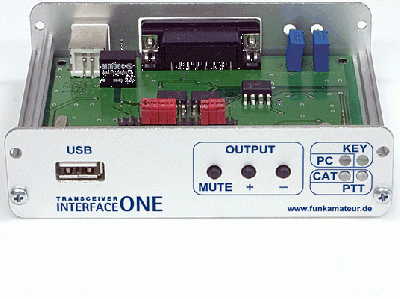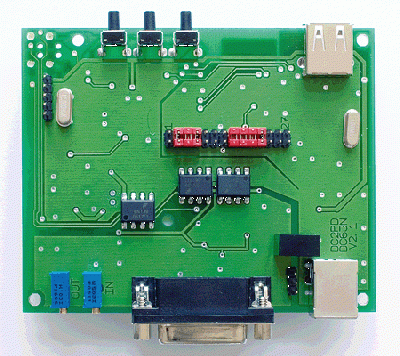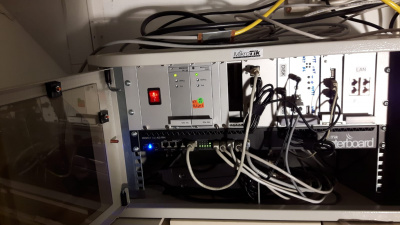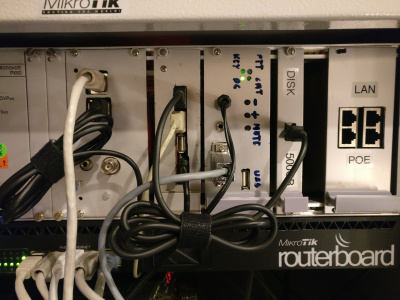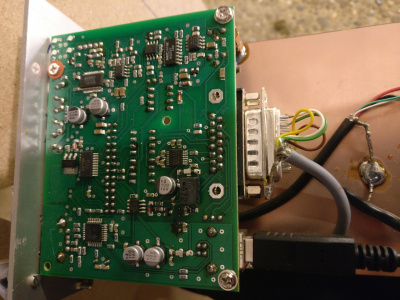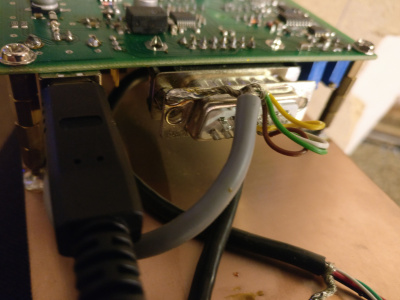Upgrade to my SvxLink Node
Inhaltsverzeichnis
1 Scope
This project is a follow-up of a number of predecessor projects. From time to time, projets need a face lift, and my SVXLINK noe suffered a nearby lightning strike, and lights went out. Time to replace the machine used up to now.
The most recent computer hardware used for the project was a Seagate FreeAgent, an early embedded platform that you could use as a hacker. Even though we're using Raspberry Pi 3B+ today, version 1 still is very useful and so I decided to assign one of my surplus boards to this task.
Previous experiments in this context:
- Porting SVXLink to OpenWRT
- A SVXLink Server based on the BeagleBoard
- Setting up a remote, electrically independent, low power EchoLink relay
- The Echolink Node DB0BUL
- Bedienung des DB0BUL-Echolink-Knotens über Funk
2 Mechanical changes
- The entire hardware was upgraded to be a 19" 3HE board carrier. I am using two VERA BICC Monovolt, giving me sufficient power at 12 and 15 volts.
- The mast unit has been replaced with a most recent Miktorik W60G "wireless wire" operating at 60 GHz.
- The main switch unit has been replaced to be a 1HE Mikrotik RB2011RM with 10 ports. The former switch unit, a noname 5 port switch went out of operation.
- The Raspberry Pi 1 now operates a USB hub, which again connects to an external disk of 500GB, acting as home partition.
3 Other Hardware
I am using the FUNKAMATEUR transceiver interface, however only the PCB, without the original case:
https://www.box73.de/product_info.php?products_id=1488
4 Software
In order to retain a working Debian / Ubuntu distribution that includes and monitors also the SVXLINK files, I decided to use a trick. There are many tutorials out there how to compile SVXLINK yourself. But the idea of having unmanaged files on my disk sucks.
- This works fine: https://github.com/sm0svx/svxlink/wiki/InstallBinRaspbian
Here is the proof that the transceiver interface is present:
root@db0bul:~# lsusb Bus 001 Device 007: ID 0bc2:2120 Seagate RSS LLC Bus 001 Device 009: ID 08bb:2902 Texas Instruments PCM2902 Audio Codec Bus 001 Device 008: ID 0403:6001 Future Technology Devices International, Ltd FT232 USB-Serial (UART) IC Bus 001 Device 006: ID 0451:2046 Texas Instruments, Inc. TUSB2046 Hub Bus 001 Device 005: ID 05e3:0608 Genesys Logic, Inc. USB-2.0 4-Port HUB Bus 001 Device 004: ID 05e3:0608 Genesys Logic, Inc. USB-2.0 4-Port HUB Bus 001 Device 003: ID 0424:ec00 Standard Microsystems Corp. SMSC9512/9514 Fast Ethernet Adapter Bus 001 Device 002: ID 0424:9512 Standard Microsystems Corp. LAN9500 Ethernet 10/100 Adapter / SMSC9512/9514 Hub Bus 001 Device 001: ID 1d6b:0002 Linux Foundation 2.0 root hub
The USB trx if appears as the Texas Instruments PCM2902 Audio Codec.
So this is my sound card device architecture:
root@db0bul:~# aplay -l **** List of PLAYBACK Hardware Devices **** card 0: ALSA [bcm2835 ALSA], device 0: bcm2835 ALSA [bcm2835 ALSA] Subdevices: 8/8 Subdevice #0: subdevice #0 Subdevice #1: subdevice #1 Subdevice #2: subdevice #2 Subdevice #3: subdevice #3 Subdevice #4: subdevice #4 Subdevice #5: subdevice #5 Subdevice #6: subdevice #6 Subdevice #7: subdevice #7 card 0: ALSA [bcm2835 ALSA], device 1: bcm2835 ALSA [bcm2835 IEC958/HDMI] Subdevices: 1/1 Subdevice #0: subdevice #0 card 1: CODEC [USB Audio CODEC], device 0: USB Audio [USB Audio] Subdevices: 1/1 Subdevice #0: subdevice #0
So I will be using hw:1,0 as audio interface.
